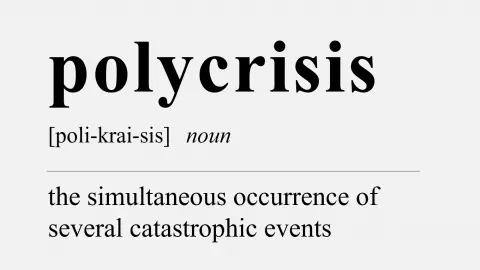The UK inflation story is starting to turn a corner
Markets expect the Bank of England to lag behind the Federal Reserve when it comes to rate cuts. But with the story on UK inflation slowly turning a corner, we think markets are overestimating the potential divergence between these two central banks
Markets expect the Fed to cut rates more aggressively than the Bank of England
Not for the first time in this central bank tightening cycle, an interesting divergence is opening up in the way investors are viewing the future path of rate hikes/cuts from the Bank of England relative to elsewhere. Where 200bp of rate cuts are now priced in the US over the next couple of years, investors are looking for just half that in the UK. And unlike the Federal Reserve, investors think the BoE still has rate hikes left in the tank before the summer.
Admittedly this divergence, if it plays out that way, wouldn’t be new. The Fed was ahead of the game with rate cuts in 2007/08, while the US tightening cycle seen through 2017/18 was not replicated in the UK.
But to see the same kind of divergence this time around we think would imply that the banking crisis is likely to have a much greater impact on the US than Europe and/or that inflation will prove much stickier.
Bank of England divergence from the Federal Reserve is far from unprecedented
The UK inflation story is starting to turn a corner
On the former, so far we’ve not seen the same degree of tightening in lending standards in the Bank of England’s Credit Conditions survey as we’ve seen in the Fed’s Senior Loan Officer report. But equally, it’s highly unlikely that the UK economy would be fully insulated from a US recession triggered by tighter lending conditions.
On inflation, there are reasons to think US inflation will fall more aggressively, or at an earlier stage, than in the UK and we’re already seeing that. Partly that’s a consequence of the UK’s exposure to Europe’s energy crisis, and it’s also just a simple reflection of the much lower weight on housing/rent in the British inflation basket.
Still, the news on UK inflation is looking slowly better. Admittedly the most recent wage and CPI data came in higher than expected, though the former has been volatile and the latter is mainly down to food and "core goods", neither of which, by the BoE’s own admission, are likely to be long-lasting trends. The BoE’s own survey of chief financial officers shows both wage growth and price-setting expectations having fallen for a few months now.
UK inflation set to fall dramatically this year
Bank of England rate cuts coming in early/mid 2024
The worry of BoE hawks is that services inflation – the part of the basket that tends to be slower-moving – could stay higher for longer. But at 6.7%, we think we’re virtually at the peak and it should go below 5% by the year-end. That’s still uncomfortable and could be a catalyst for the Bank to hold rates as the Federal Reserve begins to cut. But much of the rise in service sector inflation can be traced back to higher gas prices, which are now considerably lower. That, and the potential for slower wage growth, point to a further fall in services inflation through 2024.
We therefore expect rate cuts to begin after Easter in 2024, and this easing cycle could ultimately see Bank Rate fall below 3%. That means that, over a two-year horizon, the BoE may not look that different to the Fed after all.
Tags
Bank of EnglandDownload
Download article
12 May 2023
ING Monthly: We’re in a polycrisis – and this is what it means This bundle contains {bundle_entries}{/bundle_entries} articlesThis publication has been prepared by ING solely for information purposes irrespective of a particular user's means, financial situation or investment objectives. The information does not constitute investment recommendation, and nor is it investment, legal or tax advice or an offer or solicitation to purchase or sell any financial instrument. Read more
